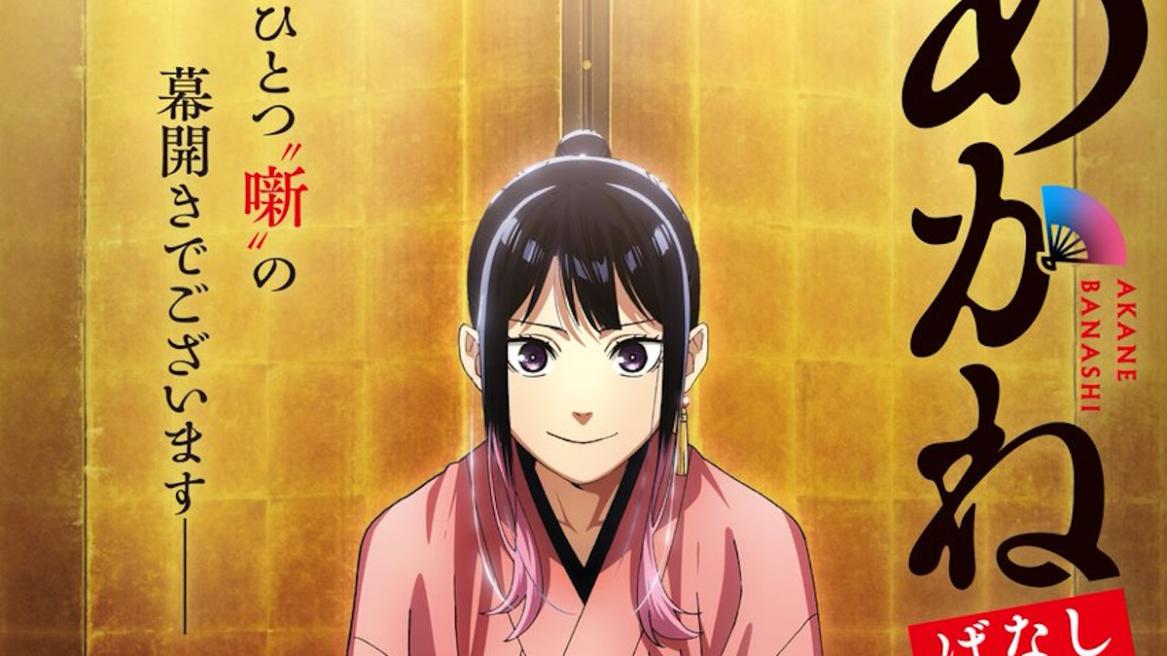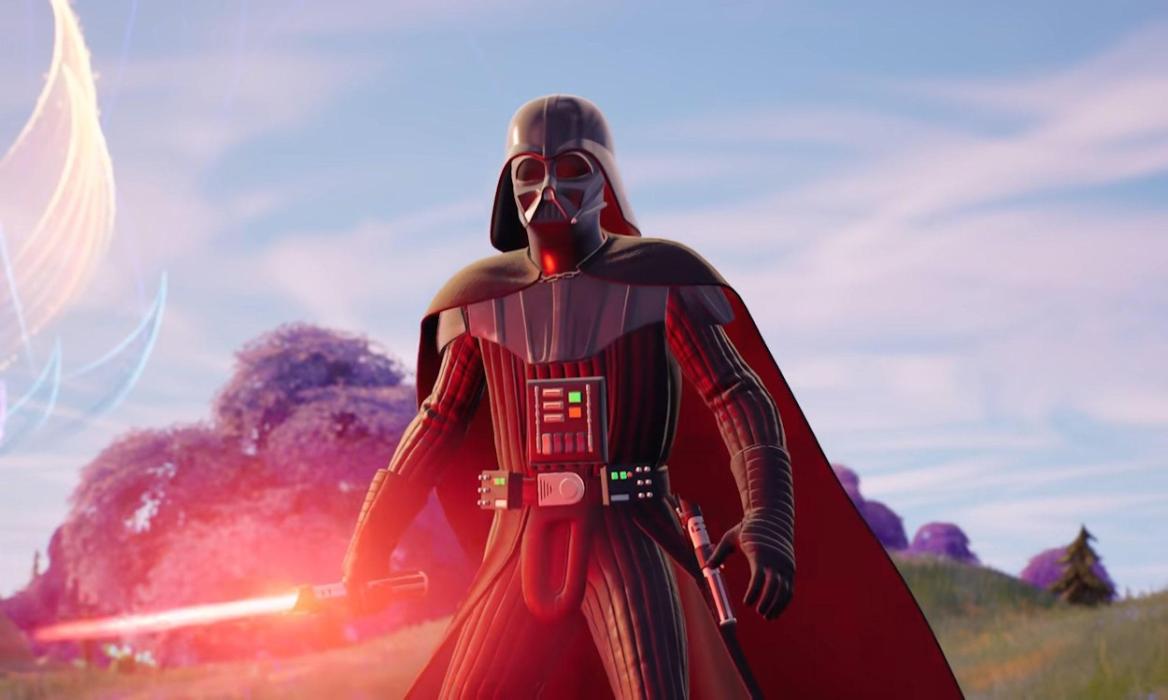In a new era of shonen manga where action-packed series often dominate the scene, Akane-banashi emerged as a standout title that blends drama with its own distinctive rhythm. After captivating readers for more than three years, the series is now expanding into a broader audiovisual landscape. Studio Zexcs is spearheading the highly anticipated anime adaptation, signaling a major milestone for fans who have eagerly awaited this crossover from page to screen. The development marks not just a transition of format but a potential shift in how rakugo-centric storytelling can be presented to a global audience.
Akane-banashi: From Manga Favorite to Anime Adaptation
Akane-banashi, created by Takamasa Moue and Yuuki Suenaga, has carved a niche within the shonen market by balancing intense dramatic moments with the sport-like precision of rakugo storytelling. In the current climate of manga where readers often gravitate toward high-octane action—the kinds of titles that dominate discussions in fan communities—the quiet, character-driven drama of Akane-banashi has stood out precisely because it refuses to conform to the prevailing formula. The series follows Akane Osaki, a young aspiring rakugoka who must navigate the demanding world of traditional Japanese storytelling while balancing personal growth, school obligations, and evolving relationships with mentors and peers. This blend of personal stakes and artistic discipline is a core element that has resonated with audiences, contributing to its lasting popularity.
The announcement of an anime adaptation has been a subject of intense anticipation for years, as fans have long discussed the potential for the adaptation to capture the mood and pacing that define the manga. After more than three years of publication, the decision to move Akane-banashi into animation represents a strategic milestone that could broaden the series’ reach beyond readers to a wider audience of anime enthusiasts. The news was confirmed through an official production update, accompanied by a teaser that provided a glimpse into the visual and tonal direction the series may take on screen. The anticipated premiere window is set for 2026, signaling a multi-year development period in which the production team can translate the delicate balance of drama, humor, and performance into a cinematic form.
Key casting announcements have also helped to raise anticipation. Anna Nagase has been confirmed to voice Akane Osaki, the lead character whose journey anchors the story. In addition, Takuya Eguchi is slated to voice Karashi Nerimaya, and Takahashi Rie will lend her talents to the character Hikaru Koragi. These casting choices suggest a dedication to bringing nuanced performance to the series, with distinctive vocal interpretations that can carry the emotional weight of rakugo-centered storytelling. The ensemble of voices is complemented by a production team that combines experienced anime professionals with a shared objective: to honor the source material while offering something fresh and dynamic for a new medium.
Production Team and Roles: What Each Key Position Brings
A project of this scale hinges on a collaboration of seasoned professionals who bring specific strengths to the adaptation. The director assigned to Akane-banashi is Ayumu Watanabe, a creator whose repertoire includes well-regarded works such as Komi Can’t Communicate and Summertime Render. Watanabe’s background in handling character-driven narratives and his experience with blending humor, emotion, and suspense are particularly relevant to Akane-banashi, where the storytelling hinges on timing, delivery, and the subtle progression of a budding artist. The role of deputy director falls to Yu Harima, whose oversight supports the director’s vision and ensures cohesive production across episodes, pacing, and visual storytelling.
Character design and chief animation direction are entrusted to Kii Tanaka, a professional known for contributing to projects like Kaguya-sama: Love Is War and Zom 100, among others. Tanaka’s expertise in capturing expressive character performances and dynamic expressions will be pivotal in translating the nuanced expressions and stage presence required for rakugo performances to the animation medium. The series composition, a backbone for the entire narrative arc, is handled by Michihiro Tsuchiya, a veteran screenwriter with credits including Fullmetal Alchemist: Brotherhood (FMAB) and Major, among others. Tsuchiya’s ability to weave complex arcs, balancing episodic beats with long-form storytelling, is essential for a series that demands both stand-alone dramatic moments and a larger, ongoing journey for Akane.
The music for Akane-banashi is composed by Akio Izutsu, whose past work on the Phi-Brain series and Genius Party signals a penchant for crafting musical landscapes that enhance mood, rhythm, and emotional cadence. Music in rakugo-driven storytelling often plays a crucial role in underscoring performance, tension, and character development, making Izutsu’s contribution particularly meaningful for shaping the auditory experience of the anime. Rakugo supervision is provided by Kikuhiko Hayashiya, a figure whose involvement indicates a commitment to authenticity in how rakugo is portrayed on screen, including the cultural and performative details that define the craft.
Studio Zexcs serves as the animation studio behind Akane-banashi, bringing a track record that includes Bakuten and Kase-san Morning Glories, among other projects. The choice of Studio Zexcs as the primary animation resource aligns with the studio’s strengths in character-driven storytelling and the capacity to produce high-quality, atmosphere-rich sequences that emphasize mood and performance. The collaboration among these creative leaders—director, deputy director, character designer, series composer, music supervisor, and the rakugo consultant—will collectively shape how Akane-banashi translates its source material into a visually and sonically cohesive anime experience.
The Official Synopsis: Plot Trajectory and Thematic Core
As presented in the official synopsis from Viz Media, Akane-banashi centers on Akane, who unintentionally becomes the center of a scandal when she is discovered taking informal lessons from her father’s former teacher, Shiguma Arakawa. This setup marks the inciting incident that propels her into a more formalized journey. Akane is about to embark on a path that will see her progress through the ranks of a rakugo performer, moving from a zenza opening act to Shin’uchi headliner status. In exchange for formal training, she must give up her informal lessons, signaling a turning point in her development as an artist and as a student balancing multiple responsibilities.
The synopsis highlights that Akane will still be required to finish high school, signaling the ongoing tension between her educational obligations and the demands of aspiring rakugo greatness. Additionally, she must navigate her relationship with Shiguma’s existing apprentices, a detail that introduces a social and mentorship dynamic into the narrative. The central question posed by the synopsis—that becoming a stellar rakugoka requires more than raw talent—underscores the series’ thematic focus on discipline, perseverance, and the acquisition of a craft that blends performance with personal growth.
This framing emphasizes that Akane-banashi is not a conventional shonen anime. Rather than a standard fight-centric formula, the series promises an artistic exploration of performance, training, and the transformation of a young artist within a tradition-rich art form. The emphasis on artistic performance suggests that the anime intends to explore rhythm, timing, voice acting, stage presence, and the cultural contexts of rakugo, potentially offering audiences a rich tapestry of storytelling that diverges from typical shonen tropes. The narrative arc appears designed to entrust Akane with a substantial personal journey, while also inviting viewers to witness the evolution of her artistry in a structured, training-based environment.
Are you excited to catch the Akane-banashi anime next year? The anticipation around the adaptation reflects a broader interest in expanding the roster of shonen titles that push beyond conventional action sequences to embrace character-driven drama, mentorship, and traditional performing arts. The casting choices and production pedigree invite a curiosity about how the series will balance authentic rakugo elements with the cinematic language of anime. If you’re following the project, you likely share a sense of eagerness about how Akane-banashi will be realized on screen and how its storytelling will resonate with both long-time manga readers and new anime fans alike.
The Creative Team: Voices, Roles, and Artistic Vision
The Akane-banashi production brings together a multidisciplinary team whose combined experience spans anime direction, animation, design, music, and cultural consultation. Ayumu Watanabe’s leadership as director sets a tone that can be both intimate and expansive, enabling the adaptation to convey intimate character moments while still delivering the dramatic beats characteristic of a serialized anime. His track record suggests a sensitivity to character psychology and a knack for translating written narrative into visual storytelling with emotional depth.
Deputy Director Yu Harima’s role complements Watanabe’s direction by ensuring that scene transitions, pacing, and episode-to-episode continuity remain coherent across the series’ arc. In a project centered on a protagonist’s growth within a traditional art form, the steadiness of direction matters, and Harima’s involvement signals an intention to maintain a clear, resonant throughline that anchors the viewer’s emotional investment.
Kii Tanaka’s responsibility as the character designer and chief animation director is crucial for conveying Akane’s personality, growth, and stage presence through animation. The character design must capture not only visual appeal but also the expressivity necessary for conveying nuanced emotions during rakugo performances. Tanaka’s background on popular titles such as Kaguya-sama: Love is War and Zom 100 indicates a facility with both decorative character aesthetics and more action-oriented or dynamic sequences, which can translate into a versatile approach for Akane-banashi.
Michihiro Tsuchiya, as the series composer, is charged with shaping the narrative progression, episode structure, and overarching arc. Tsuchiya’s experience on FMAB and Major offers a blueprint for balancing dramatic stakes, character development, and episodic storytelling. His role ensures that the adaptation remains faithful to the manga’s rhythm while adopting a format suitable for serialized television, including arc pacing, cliffhangers, and the careful distribution of emotional and informative beats.
Music composition by Akio Izutsu is anticipated to provide a sonic framework that complements the performance-centric premise. The musical score can elevate the tension of training sequences, the subtlety of character interactions, and the grandeur of pivotal rakugo moments. A well-crafted soundtrack will be essential to align with the pacing of performance scenes and to reinforce the emotional resonance of Akane’s journey, especially during sequences that imitate or evoke the cadence of a live rakugo performance.
Rakugo supervision by Kikuhiko Hayashiya is a meaningful detail for audiences who seek authenticity in the depiction of rakugo practices. Hayashiya’s involvement suggests that the anime will strive to present rakugo elements with respect for the craft’s traditions, while also integrating them into a cinematic anime framework that can explore the art form’s theatricality, rhythm, and audience dynamics. This supervision supports the integrity of the source material’s portrayal of rakugo and provides a cultural anchor within the adaptation.
Studio Zexcs, as the animation studio responsible for Akane-banashi, brings a portfolio that includes work with character-driven storytelling and a capacity for creating atmospheric and visually engaging sequences. Zexcs’ previous titles illustrate the studio’s ability to deliver character emotion and mood through animation, which is essential for a series that relies on performance and character development as much as on dialogue and plot developments. The collaboration between Zexcs and the creative leadership team aims to produce a cohesive, emotionally resonant anime that remains faithful to the manga while exploiting the expressive possibilities of animation to intensify dramatic moments and performance sequences.
Planned Release, Teasers, and Fan Engagement
The release plan for Akane-banashi centers on a 2026 premiere window, reflecting a multi-year development timeline that accommodates script refinements, animation production, voice recording, and post-production tasks such as editing and music mixing. The arrival of a teaser in the midst of production offers fans a tangible glimpse into the animation style, character design, and tonal direction. The teaser can serve as a barometer for expectations, signaling whether the adaptation will lean more toward the manga’s intimate character-centered storytelling or toward a broader, more cinematic presentation that emphasizes performance sequences and visual spectacle.
The official cast announcements, including Anna Nagase, Takuya Eguchi, and Takahashi Rie, provide essential anchors for audience anticipation. The casting choices suggest a commitment to delivering vocal performances that can convey the emotional and performative complexity of the rakugo world. As fans analyze the teaser and promotional materials, they will likely assess how the animation captures the subtle cadence of rakugo storytelling, the expressive gesturing of performers, and the interplay between voice acting and stage presence.
Plot, Theme, and Potential Impact on the Shonen Landscape
Akane-banashi’s premise positions it as a noteworthy entry in the broader shonen landscape, particularly because it centers on performance art and mentorship within a traditional Japanese art form. The narrative structure—combining a young protagonist’s school life with a rigorous training path in rakugo—offers a blueprint for thematic exploration that can appeal to a broad audience. The tension between maintaining academic responsibilities and pursuing a demanding artistic career presents a relatable conflict for many viewers who have faced similar balancing acts in other stories. Moreover, the mentorship dynamic with Shiguma Arakawa and the rival apprentices adds layers of social interactions, competition, and personal growth that can drive character-driven drama across episodes.
The exploration of what it means to become a “shin’uchi” headliner in rakugo introduces unique storytelling opportunities that diverge from typical battle-centered or power-up-centered shonen. By focusing on performance craft, timing, delivery, and the cultural significance of rakugo, Akane-banashi can offer an educational dimension while maintaining entertainment value. The potential for rich character development— Akane’s evolving relationship with mentors and peers, her balancing of high school life with artistry, and her progression through the rakugo ranks—could position the series as a standout example of how genre boundaries can be expanded without sacrificing emotional depth or narrative coherence.
With the creative team’s robust credentials and Studio Zexcs’ production capabilities, Akane-banashi has the potential to deliver a visually compelling, emotionally resonant, and culturally respectful adaptation. The combination of a director experienced in character-centric storytelling, a composer attuned to mood and rhythm, and a rakugo supervisor who can ensure authenticity all contribute to a high-confidence projection for the series’ reception. Audiences can anticipate an anime that thoughtfully translates the manga’s drama and artistry into a format that leverages sound design, voice performance, and animation to evoke the magical, intimate atmosphere of rakugo stage performances.
Rakugo in Focus: Cultural Context, Craft, and Cinematic Translation
Rakugo is a storytelling tradition with a long history in Japanese culture, characterized by a solo performer delivering a narrative with humor, tension, and dramatic beat changes. The performer’s skill rests on timing, voice modulation, facial expressions, and physical gestures that convey multiple characters through mannered speech and posture. Translating rakugo to animation requires capturing not just the words but the performative essence—the pacing of the storytelling, the interplay with the audience (even if the audience is represented on screen), and the emotional arc of the performer’s journey. Akane-banashi’s premise, which centers on Akane’s ascent from zenza opening act to shin’uchi, inherently engages with these cultural elements in a way that could broaden appreciation for the art form beyond its traditional audience.
The production team’s emphasis on rakugo supervision underscores a commitment to authenticity. This attention to craft goes beyond surface-level depiction of performance; it signals an intent to preserve the nuanced techniques, the subtleties of stage presence, and the social dynamics that shape the rakugo community. For viewers unfamiliar with rakugo, the anime can serve as an educational gateway, introducing the terminology, the hierarchy, and the practice of formal training while maintaining an engaging dramatic arc. For fans already versed in rakugo culture, the series offers a chance to see familiar concepts represented with fidelity, potentially enriching their appreciation through a well-crafted adaptation.
From a storytelling perspective, Akane-banashi’s focus on an aspiring artist navigating training, mentorship, competition, and personal growth aligns with a broader trend in contemporary anime that values character-driven journeys. The shift away from purely action-centric narratives toward narratives anchored in craft, culture, and mentorship reflects evolving audience tastes that favor depth and authenticity. The creative team’s deliberate choice to foreground Akane’s development within the rakugo world can yield a compelling examination of discipline, resilience, and the pursuit of excellence. The result could be a show that feels both intimate and expansive, providing opportunities for intimate character moments and larger thematic statements about tradition, innovation, and generational continuity within a living cultural art form.
Visual Style and Animation Considerations
The collaboration with Studio Zexcs promises a visual approach designed to support both character expression and performance sequences. A rakugo-centered anime demands a careful balance between intimate character close-ups and the broader staging of rakugo performances. The animation team will need to choreograph timing, facial expressions, and gesture language in ways that convey character intent and emotional trajectory with precision. The visual language can harness lighting, color palettes, and composition to emphasize the dramatic heartbeat of Akane’s training journey and the theatricality of the performances she learns to master.
Character design, led by Kii Tanaka, will be pivotal in bringing Akane and her peers to life with distinctive, expressive looks that translate well to the screen. The design must capture not only personality but also the subtle physicality involved in performance—posture, breath control, and micro-reactions that contribute to believability in a live delivery of lines or the illusion of a stage act. The overall art direction should harmonize with the musical score and sound design to produce an immersive atmosphere that echoes the cadence and rhythm of rakugo storytelling while maintaining the visual appeal required by a contemporary anime audience.
Music as a Narrative Thread
Izutsu’s musical approach will be instrumental in shaping the emotional arc of Akane-banashi. The interplay between dialogue, performance cues, and musical motifs can enhance the sense of progression from student to master, while also framing ambient scenes that reflect Akane’s inner state. The music can be used strategically to underscore transitional moments—shifts in training focus, moments of doubt, or triumphant breakthroughs—without overshadowing the dialogue or the performance scenes themselves. The soundtrack can become a subtle, constant companion to Akane’s journey, reinforcing the thematic emphasis on discipline, craft, and growth that lies at the heart of the narrative.
Rakugo’s performance cadence may also influence the musical direction, encouraging a score that respects traditional pacing while integrating modern textures or orchestration that align with contemporary anime sensibilities. This fusion can help the series achieve a balance between cultural authenticity and broad accessibility, ensuring that the musical landscape supports both emotional resonance and audience engagement across a diverse viewership.
Market Context: Audience Reception, Expectations, and Cultural Impact
Akane-banashi’s anime adaptation sits at an intriguing intersection of fan anticipation, cultural appreciation, and market dynamics. For manga fans, the transition to a serialized anime presents a chance to experience beloved characters and moments in a new sensory medium. The teaser release, along with cast announcements and production details, serves as a strategic engagement touchpoint that keeps fans invested while the franchise expands into a new format. Viewers who prioritize storytelling craft, character development, and cultural exploration may find Akane-banashi particularly appealing, especially if the adaptation emphasizes the art and discipline of rakugo alongside Akane’s personal and artistic evolution.
From a broader industry perspective, Akane-banashi could contribute to a diversification of the shonen landscape by showcasing a narrative that prioritizes artistic performance and mentorship over conventional action sequences. This shift aligns with ongoing trends that broaden genre boundaries, inviting new audiences to engage with stories rooted in traditional art forms. If the adaptation succeeds in translating the manga’s tonal balance and depth into animation, it could inspire similar projects that explore culturally rich subject matter within the shonen framework, expanding the types of stories that are considered viable for mainstream anime audiences.
The involvement of a reputable studio and a crafted team of veterans from established series also raises expectations regarding production quality and consistency. Fans will be watching not only for faithful adaptation but also for how faithfully the anime captures the mood, pacing, and aesthetics of rakugo-centered storytelling. The potential for critical acclaim and audience approval depends on a combination of faithful narrative translation, engaging character dynamics, and an authentic portrayal of the art form that resonates with both traditionalists and newcomers. In this sense, Akane-banashi represents an ambitious project with the potential to influence how traditional arts are presented within contemporary animation.
Production Roadmap: Timeline, Teasers, and Fan Engagement Strategies
The official confirmation of Akane-banashi’s production, coupled with the 2026 premiere target, provides a roadmap for sustained fan engagement over the coming years. Production updates, behind-the-scenes glimpses, and periodic teasers can help maintain interest while fans anticipate the full release. The teaser’s release offers a tangible indicator of the series’ visual direction, pacing, and tonal approach, inviting early impressions and discussion within fan communities. As with many adaptations, the path from teaser to full broadcast often includes test screenings, voice recording sessions, motion studies, and iterative refinements to align the anime with the evolving vision of the creative team.
Engagement strategies for fans may include release windows for additional promotional materials, interviews with the staff and cast, and early discussions about the implications of the adaptation for Akane’s character arc and the rakugo world. The cast’s vocal performances will be a focal point of fan analysis and discussion, as audiences evaluate how the voices capture Akane’s resilience, ambition, and evolving relationships with mentors and peers. The production team’s transparency about the adaptation process can enhance trust and anticipation, helping to sustain momentum throughout the long lead time before the premiere.
Practical Considerations for Viewers and Newcomers
For viewers new to Akane-banashi, the anime offers an opportunity to experience rakugo through an accessible, narrative-driven medium. Those who have followed manga for years may look forward to seeing key sequences animated with increased emotional intensity and visual nuance. Viewers may also be curious about how the anime handles the balance between Akane’s school life and her rigorous training, and how the series communicates the cultural significance of rakugo to a global audience. The production team’s choices regarding pacing, episode structure, and the portrayal of training sequences will play a significant role in determining how successfully the adaptation resonates with diverse audiences.
As the release approaches, fans will likely engage in discussions about the fidelity of the adaptation to the source material, the effectiveness of the voice cast, and the overall execution of the rakugo sequences. The combination of a strong director, seasoned staff, and a studio with a track record in character-focused storytelling provides a solid foundation for delivering a high-quality anime that respects cultural nuance while delivering broad appeal.
Conclusion
Akane-banashi stands as a promising addition to the contemporary shonen landscape, offering a Drama-forward narrative centered on rakugo performance, mentorship, and personal growth. The anime adaptation, produced by Studio Zexcs and guided by a skilled director lineup, aims to translate the manga’s distinctive blend of artistic drama and character development into a compelling animated experience. With a strong voice cast including Anna Nagase as Akane Osaki and supporting performances from Takuya Eguchi and Takahashi Rie, the project demonstrates a thoughtful approach to storytelling, pacing, and character expression. The official synopsis describes a journey in which Akane must navigate scandal, formal training, high school life, and evolving relationships, all while striving to become a Shin’uchi headliner. This framing signals a narrative rich in thematic depth, focusing on discipline, perseverance, and the craft of storytelling itself.
The production’s emphasis on rakugo authenticity, music, and visual storytelling suggests a well-rounded approach designed to honor the source material while leveraging anime’s strengths. If the adaptation captures the rhythm, emotion, and cultural nuance of rakugo, Akane-banashi could significantly broaden the appeal of traditional performing arts within mainstream anime audiences. The 2026 premiere marks an important milestone for fans and newcomers alike, inviting a broader conversation about how traditional art forms can be celebrated through modern animation. As anticipation builds, audiences can look forward to a nuanced, richly crafted series that not only entertains but also educates and honors the cultural lineage of rakugo.



